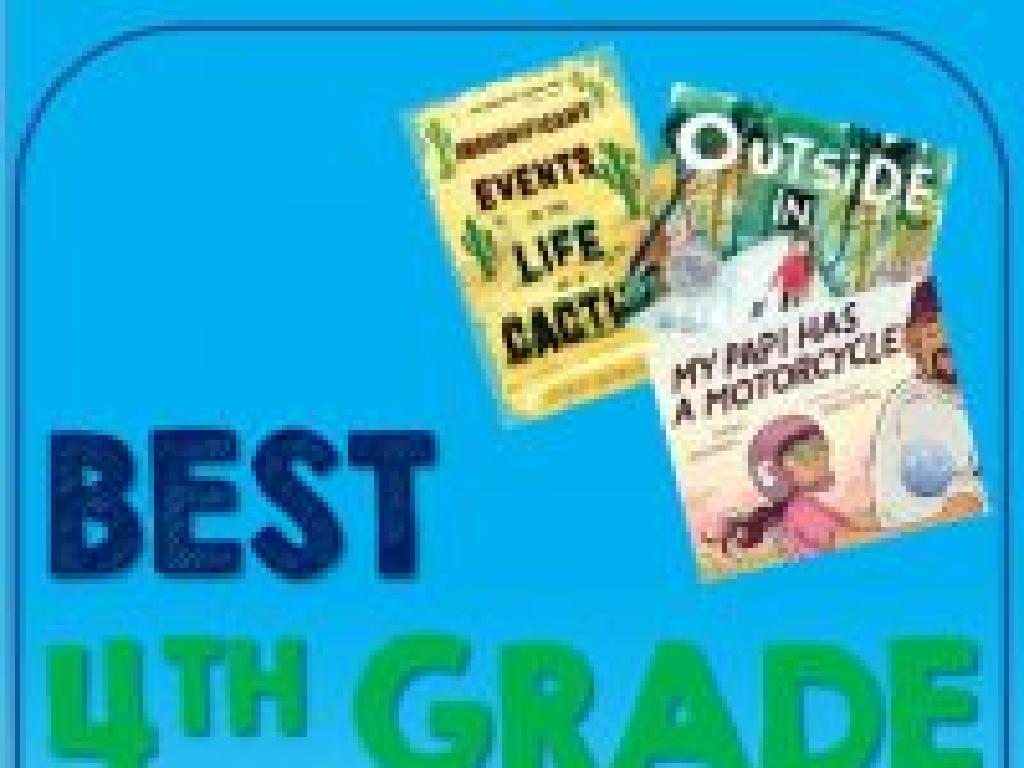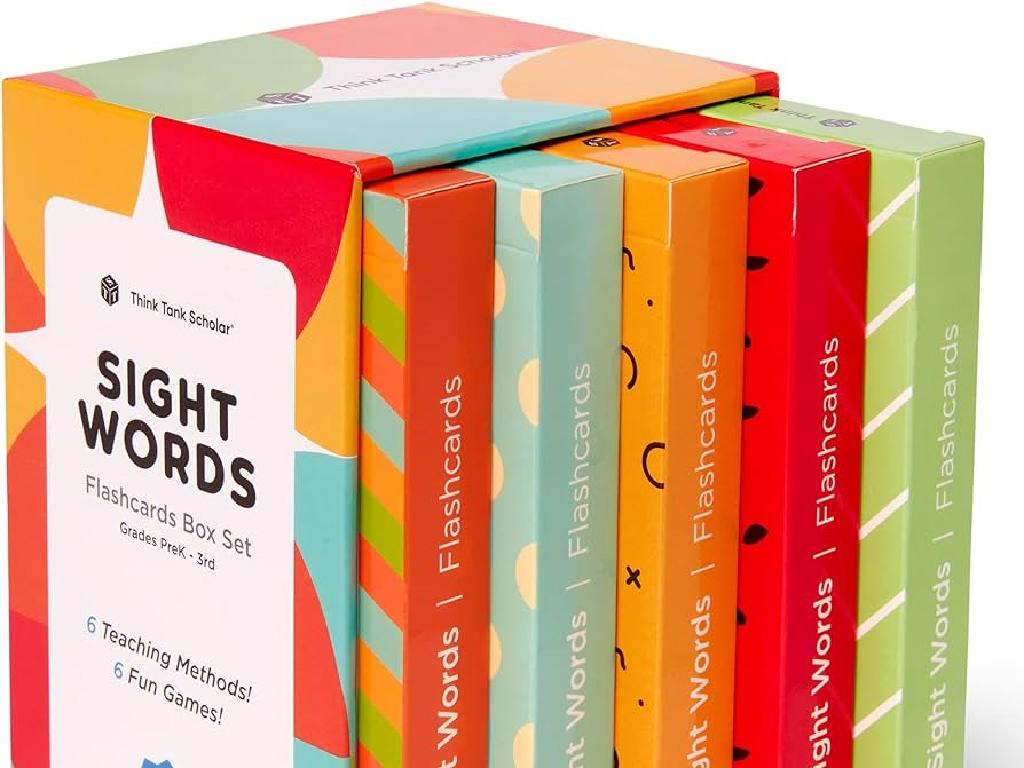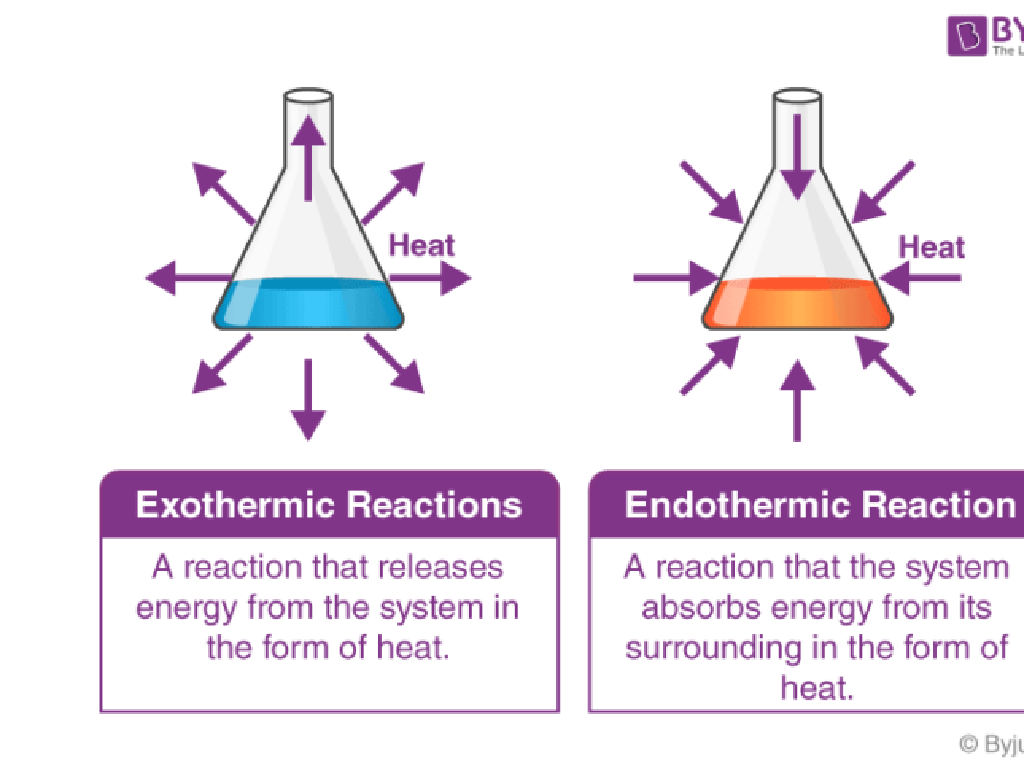Take Apart Numbers Up To 10 - Addition Sentences
Subject: Math
Grade: Kindergarten
Topic: Take Apart Numbers Up To 10
Please LOG IN to download the presentation. Access is available to registered users only.
View More Content
Math Fun: Taking Apart Numbers!
– Play with numbers up to 10
– Learn to take numbers apart
– Break down numbers into smaller pieces
– See how numbers combine
– Numbers can join to make bigger ones
– Practice with addition sentences
– Use ‘+’ to show adding pieces together
|
This slide introduces the concept of deconstructing numbers up to 10, which is a fundamental skill in early math learning. The objective is to help students understand that numbers can be broken down into smaller parts and reassembled, much like building blocks. Start by engaging them with playful activities that involve physically combining and separating objects to represent numbers. Then, transition to using addition sentences to show how smaller numbers come together to form larger numbers. Encourage the children to use hands-on materials like counters or blocks to visualize the process. This will help them grasp the concept of addition as putting together and taking apart. Prepare to guide them through several examples and provide plenty of opportunities for practice.
Taking Apart Numbers Up to 10
– Understanding taking apart numbers
– Breaking numbers like sharing cookies
– Imagine splitting a cookie to share with two friends
– Practice with numbers up to 10
– Use counters or fingers to show 5 as 2 and 3
– Addition sentences from parts
– If we have 5 and take away 2, we have 3 left
|
This slide introduces the concept of decomposing numbers, which is a foundational skill in understanding addition and subtraction. It’s important to use tangible examples that Kindergarten students can relate to, such as breaking a cookie into parts to share. Use hands-on activities with physical objects like counters to demonstrate how a number can be taken apart into two smaller numbers. Encourage students to think of addition sentences that match their breakdowns, reinforcing the concept that numbers can be split into parts and recombined. This will help them grasp the idea of addition as putting together and subtraction as taking apart.
Exploring Number 5 with Addition
– Making 5 with 2 and 3
– 2 plus 3 equals 5
– Making 5 with 4 and 1
– 4 plus 1 equals 5
– Different ways to make 5
– Can you think of another way?
|
This slide introduces the concept of addition as a method of ‘taking apart’ numbers, specifically the number 5. Start by showing the students that 5 can be made by adding 2 and 3. Use visual aids like blocks or fingers to help them see the combination. Then, show that 5 can also be made by adding 4 and 1. Encourage the students to come up with other combinations that make 5, such as 5 and 0. This activity helps students understand that there are multiple ways to break down numbers and that addition is a flexible process. Make sure to use simple language and concrete examples to ensure comprehension. The goal is for students to recognize that numbers can be composed and decomposed in various ways, which is a foundational math skill.
Learning Addition Sentences
– Taking apart numbers
– Writing addition sentences
– An addition sentence shows how numbers combine
– Example: 2 + 3 = 5
– Shows that 2 and 3 together equal 5
– Combining numbers to make a new number
|
This slide introduces the concept of addition sentences to Kindergarten students. Begin by explaining that taking apart numbers means breaking them down into smaller numbers that can be added together. Show them how to write an addition sentence using the example 2 + 3 = 5. Explain that the two numbers on the left side of the equals sign are added together to make the number on the right side. Use simple, relatable examples, such as combining groups of toys or snacks, to illustrate the concept. Encourage the students to think of their own examples and to use their fingers or objects to practice creating addition sentences.
Your Turn to Try: Taking Apart the Number 6
– Understand taking apart numbers
– Find two numbers that sum to 6
– Examples: 1+5, 2+4, or 3+3
– Write the addition sentence
– Show how to write ‘2+4=6’
– Practice with different pairs
– Try with 0+6, 1+5, and so on
|
This slide is an interactive activity for students to practice decomposing the number 6 into pairs of smaller numbers that add up to 6. Start by explaining that ‘taking apart’ a number means finding two or more numbers that can be added together to make the original number. Encourage the students to think of different number pairs that add up to 6 and write them on the board. Guide them through writing the addition sentences for each pair. For example, if a student says ‘2 and 4’, write ‘2 + 4 = 6’. This will help them understand the concept of addition as putting together and taking apart numbers. Provide several examples and allow the students to come up to the board and write their own addition sentences. This hands-on activity will reinforce their understanding of addition within 10.
Taking Apart Number 10
– Number 10 is a big number
– Use fingers to count to 10
– Counting on fingers makes it fun and easy
– Find pairs that make 10
– Like 1+9, 2+8, 3+7… Can you think of more?
– Practice with different pairs
– Try using toys or blocks to see how 10 can be split
|
This slide introduces the concept of decomposing the number 10 into pairs of smaller numbers that add up to 10. Emphasize that 10 is a big number, but it can be broken down into smaller, more manageable parts. Encourage the children to use their fingers to count to 10, as this provides a visual and tactile way to understand the concept. Guide them to discover all the different pairs of numbers that can be added together to total 10. Provide examples and then let them explore other combinations on their own, using manipulatives like toys or blocks to physically represent the pairs. This hands-on activity will help solidify their understanding of addition and the composition of the number 10.
Class Activity: Number Pairs Game
– Play a matching game with numbers
– Find pairs that add up to 10
– Cards like 1 and 9, 2 and 8, 3 and 7…
– Team up with a classmate
– See how many pairs you can make!
|
This interactive class activity is designed to help Kindergarten students understand the concept of addition and number pairs that sum up to 10. Set up the classroom with number cards scattered on tables or the floor. Pair up students and instruct them to find and match cards that together equal 10. This activity promotes teamwork and provides a hands-on approach to learning addition. Possible variations include timing the activity for a fun race, having students create their own number cards, or introducing subtraction by finding pairs that would subtract to get smaller numbers. Encourage students to explain their thought process as they find each pair to reinforce their understanding.
Great Job with Numbers!
– Celebrate learning number puzzles
– Numbers are puzzles to solve
– Think of numbers as pieces that fit together
– Practice is key to mastery
– The more we play, the better we get
– Continue playing with numbers
– Use toys or snacks to practice at home
|
This slide is meant to wrap up the lesson on taking apart numbers up to 10 and to reinforce the concept that numbers can be broken down into smaller parts, just like puzzles. It’s important to praise the students for their hard work and encourage them to continue practicing at home. Suggest that parents use everyday items like toys or snacks to make learning fun and hands-on. Remind the students that with practice, they will get better at understanding and solving number puzzles. The goal is to leave the students feeling accomplished and excited about their progress in math.


/mla_citation_example.jpg)



